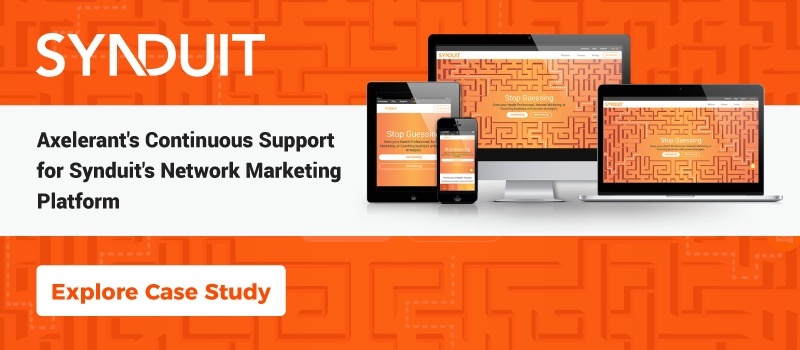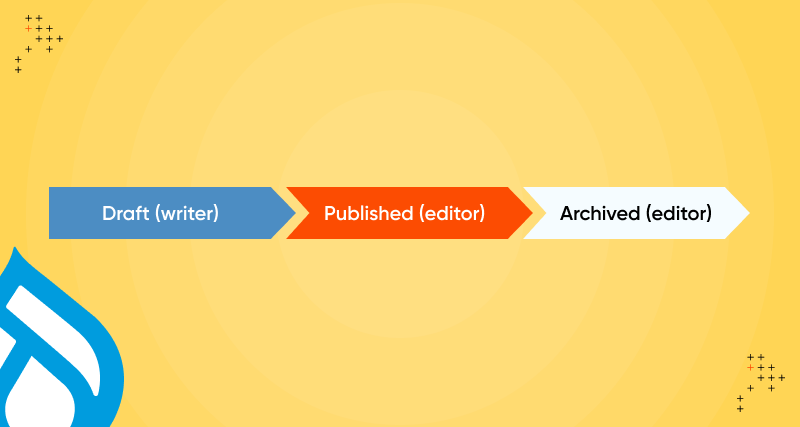Introduction
We’ve been doing staff augmentation to enable Drupal development teams since 2005, so our delivery and sales team knows a thing or two about it. How it works and for whom—how to mess it up!—and best practices.
Here's what we mean by Drupal development staff augmentation.
Staff augmentation for Drupal development teams is a talent sourcing strategy. It starts with identifying gaps in skill sets or bandwidth of existing development teams; bringing in additional resources fully equipped to handle development project requirements fills these gaps.
Typically from our standpoint staff augmentation resources are placed in a client’s environment and from that point on it’s the responsibility of the project manager or product owner to ensure projects run per business needs.
We’ve found that this approach takes onboarding effort—true whenever bringing on a new resource. And it costs significantly less than the effort involved in hiring a new resource or outsourcing an entire Drupal development project long-term.
There’s less of an impact on existing internal structures and operations than other development outsourcing or insourcing models. Meaning it’s project outsourcing for clients that want to avoid climbing hiring costs. Staff augmentation allows Drupal development teams immediate access to the skill sets needed, thereby empowering the team to scale as required, to respond to market requirements—all with greater agility.
Openness is one of our values, so we’ll be clear.
It’s our job to make the engagement successful for our customers. We remain invested in the success of our client’s project, by requesting regular feedback, enhancing skills, having internal and external retrospectives. It’s important to convey that we’ve found the conventional staff augmentation service approach doesn’t allow us to deliver the greatest value to our clients. Especially for our clients whose development needs are continuous vs. end-to-end.
Yes, Drupal development augmentation works, and it works well for many of our clients. But it's clear continuous delivery services have had the most impact, which is why we lean more towards a managed services model for this reason.
11 Things To Remember About Staff
Augmentation in Drupal Development Teams
1. For A Successful Engagement, Both Should Kick Off The Project
We see each engagement as an ongoing partnership and believe that for it to be successful, we need to be fully aligned with our clients' expectations. Every Drupal development agency has its own tools, frameworks, and workflows. At the outset of any partnership, our augmentees go through an onboarding “staff augmentation process” to get them familiarized with our client’s processes and ready to integrate.
This helps assure clients that they have the right experience levels. Project kickoff is done both externally and internally. The staff augmentation agreement is jointly reviewed by the team along with the Customer Success Manager (CSM). Only when both parties are set and satisfied, do we launch into the project.
The client is the stakeholder and is most closely aligned with the project vision and goals. They feel the gaps in their service structure and often know precisely what skill sets are required to fill them—including the expected time to completion (TTM). Since the client's system is already operational, the best on how the skill sets offered by Axelerant fit their needs at a detailed level can be made by technical leads at the client’s end. (This relates to our second point!)
A joint discussion and agreement ensure that both parties have a clear understanding of capabilities and requirements. This minimizes the chance of miscommunication and expectations not being met.
Additionally, our staff augmentation teams are trained and experienced in working with agile methods, so we prefer collaborating with clients who understand agile and use it for their day-to-day project management. Our team can adapt to custom or modified methodologies as well, as long as the fundamentals remain the same.
2. It's Only Successful With Adequate Ownership On The Client's Side
As a staff augmentation best practice, we’ve found that unless there is a Scrum Master or Project Manager also part of the staff augmentation team Axelerant doesn't usually have much insight into what is going on in the project.
If there are process inefficiencies on the client’s end, for example, our Drupal development resources will not be able to deliver the greatest value to the team they are part of, as they will be constrained by these same challenges. This makes it important for the client to have the technical leadership to guide the augmented team effectively.
We recognize that our team members can deliver their best when they have a holistic view of the project's requirements. We don't simply do piecemeal tasks assigned on a tool, following a particular process. We are invested in the success of the project. This means that each task has to have meaning with respect to the objectives of the project. To that end, we push for access to the Product Owner (PO) where possible, so that we can make a more effective contribution to the staff augmentation project’s success.
Also, the close involvement of a project manager helps establish expectations. Whether it’s project success criteria or areas of priority, having access to a resource from the client's side helps set mutually aligned expectations from the beginning of the partnership.
3. Feedback Should Be Continuous
Not having direct access to the product owner on the client’s side makes it all the more important for us to know how each team member is performing in their role within the client organization.
Without continuous feedback in the past, we’ve run into cases where staff has been terminated from projects without being given any opportunity to improve. Something that could have easily been prevented if there had been an open dialogue between the client and us.
Previously, we had created a detailed feedback form to collect talent-wise feedback on responsiveness, availability, quality, and other such parameters. But we found that our clients had a low rate of response to such detailed questions. Studying the root causes and skewing ourselves to the possibility of leaner customer experiences, we now aim to capture not the details but an overall satisfaction pulse. This is based on our experience with frequent replies on Customer Net Promoter Scores (NPS) as against detailed customer feedback forms.
This pulse is then used during our weekly follow-up calls to learn more about details specific to the resources, and develop plans for internal training and coaching programs. Depending on our clients’ needs, we can reduce the frequency of these calls to bi-monthly. These conversations are meant to give our clients the opportunity to raise any issues with any members of the staff augmentation team and to discuss their future business needs with us. We try to capture the details on what is not working for our clients to allow our resources the opportunity to improve on bottlenecks through internal coaching.
Axelerant, as a staff augmentation company, continuously works towards enhancing the skill level of its staff via training and certifications, as per industry standards and the needs put forward by the client.
We ensure that our staff augmentation resources are equipped with industry standard best practices, from engineering to management. This has been a strategic focus for Axelerant since its inception: organizational-driven professional development.
4. Consider The Long-Term Value Of Every Individual
We believe that the same resources should be able to provide a greater ROI for each resource in a longer-term engagement, based on their growth and learnings.
This rating is used in internal KPI and performance appraisals for the resources from Axelerant. It encourages greater dedication in the resources towards the client, which then impacts their performance-based incentives and raises. This rating is also used for forecasted staff augmentation talent planning and commitment by Axelerant’s Resource Management System.
Early feedback helps minimize surprises for both the parties and minimizes the risk of replacements at a crucial point unless essential.
We invest in our people. And ultimately, this helps our clients derive greater value from the engagement. Each is provided mentorship as well as ample opportunities for growth through training and certifications. Mentoring helps us overcome knowledge gaps that may exist between individuals, enabling each person to contribute fully.
5. Have Regular Retrospectives To Prevent Knowledge Silos
Internal retrospectives conducted within Axelerant’s staff augmentation team, along with external retrospectives conducted with the client, allow for knowledge-sharing in the staff augmentation portfolio across projects. This prevents the creation of knowledge silos over time.
Each talent pod in our staff augmentation portfolio is working with a varied capability and best practice process pool at the client’s end. Their learnings from each engagement are unique, and real value can be brought back to the organization via sharing.
These retrospectives are a particularly good staff augmentation best practice since it also allows us to hear out and address our team members' challenges with the clients' setups and processes. Our team members' retrospectives with clients may not allow them the opportunity to voice their concerns if the concerns are related to client-side structures, lack of guidance, bureaucracy, and processes. This is based on our experience with a few team members who had to work with clients who were themselves disorganized and pushed our team to deliver unfeasible expectations.
Our review of retrospective minutes confirmed the need for addressing staff augmentation issues when faced with unrealistic expectations, disorganized processes, and so on from the client’s end. We believe each needs and should be provided an optimum environment to perform to the best of their capabilities. Setting our people up for failure isn’t an option.
These internal retrospectives give Axelerant an opportunity to go back to the clients and discuss the challenges in their systems to turn the graph around for our staff augmentation team members.
6. Ensure Frameworks Are In Place For Easy Knowledge Transfer
To enable easy knowledge transfer at the time of a Drupal development resource leaving an engagement, we need our clients to establish documentation alongside the engagement. This includes platform and product documentation—features, business objectives, etc.
We expect this for easier onboarding and maintenance of the platform. If there's support needed from our team, these needs can be discussed with the Axelerant Customer Success Manager (CSM).
Additionally, we maintain frameworks that allow for an easy handoff, in the form of an onboarding process, summary overview of the project, etc. Frameworks should be tailored per the demands of each project.
7. Maintain Distinct Capability Layers To Address Needs
While hiring new team members, we look for a minimum level of experience. At the same time, we focus on maintaining a balance between different capability layers. To be able to quickly address our clients' needs, we maintain a staff augmentation talent pool at Axelerant that is a blend of all engineering capability layers. This means that we are available at all times to support variations in project complexity.
Through our regular reviews of demand forecasting and feedback from customers for our talent, Axelerant’s talent management system—which is feeding into its recruitment and hiring—allows us to stay prepared for upcoming demands.
Any shortage in capability layers doesn’t translate to adding a candidate of lower capability to the client’s team. This means that our clients always have access to staff with the right skill set and level of experience. Reduced risk of onboarding and learning costs at the client’s end are sidestepped, and this ensures that the replacement augmentee
8. As Far As Possible, We Take On The Risks For Our Clients
We conduct a planned client onboarding process for our resources at the start of the staff augmentation partnership. With new engagements, our team members have to be updated with the baseline definitions of the client company’s expectations.
Axelerant’s onboarding process ensures that any replaced team members are maximally productive at the start of the engagement.
In the past, we have faced challenges with a few clients where team members have needed to take unplanned leaves, and we have not had any resources to replace them with. Now, there is also a continuous effort internally at Axelerant to proactively plan for leaves and share leave plans with the clients to help them plan releases.
If the client needs a leave replacement, we provide another Drupal development resource of the same or higher capability. This helps ensure execution continuity and least impact so that sprint and release plans at the client's end are not jeopardized. Axelerant takes this on for longer leaves as well.
We believe that it is our job to ensure that our clients do not face any problems if one of our team members requires leave. How we handle that, or at what cost, can never be the client's headache.
9. Managing Client Needs Is Easier With Regular Communication
We’ve found that communicating openly with our customers helps us anticipate any sudden staff addition needs. If our clients’ requirements suddenly change, frequent calls enable us to find out earlier and stay prepared to adapt to their needs. We have calls with our clients regularly—once every two weeks.
In case there is an urgent need for additional resources from the client’s end, Axelerant scrutinizes allocations across its entire staff augmentation portfolio to provide the right capability without adding risk to other projects.
In certain cases, based on the engagement and its strategic value, Axelerant has been agile enough and has gone the extra mile to re-evaluate the capability needs of existing projects in execution. We’ve swapped team members while ensuring that none of the business relationships were jeopardized. This is, of course, is only done only after close risk evaluation of onboarding and learning by swapping resources across projects.
10. Protect Clients’ Sensitive Data With Every Means
Each resource signs a non-disclosure agreement (NDA) to minimize any chance of sensitive information at the client’s end being misused. We work with the client’s security procedures, ensuring that we have restricted physical access to their servers and other hardware assets. We also use VPN’s to access their infrastructure in as secure a manner as possible.
This helps prevent security breaches, ensures we are committed to our clients’ policies and procedures, and means that our team members extended team.
In addition to this, we conduct ourselves with a degree of respect for our clients’ property. We understand that, as staff augmentees, we don’t own the code that we might be working on. If a potential client has asked to see the code, we know that it’s not ours to share.
We maintain firm boundaries between people in various roles, sharing only as much information as each person strictly needs to know. Anything else is inappropriate.
For example, we communicate with our clients over Skype, and our CSM’s are not included in these calls. They manage the engagement, not the technical project, and do not need to be deeply involved in aspects where it may be more important to maintain confidentiality.
11. Be Willing To Go Onsite When The Time Comes
With staff augmentation, especially over shorter engagements, it can sometimes be a challenge to establish a naturally strong connection and cross-sharing between Axelerant’s talent and the client team. We’ve found that in such cases, going onsite helps alleviate a lot of these issues by establishing a closer working relationship. It just helps break barriers.
Drupal development staff augmentation takes experience.
Even the best staff augmentation teams can fail if they do not keep the success of the client always in their mind during the project. So we maintain a tight focus on ensuring our staff’s capabilities match our client’s requirements. We’re also arriving at simplified ways for clients to rate our team members. Along the same lines, we’ve ensured that all our staff augmentation best practices are grounded in one common theme: customer success.
At the same time, both partners’ challenges need to be continuously and proactively addressed. Measures have to be taken to ensure that our team members’ challenges arising from client-side inefficiencies aren’t overlooked.
These are some of the staff augmentation best practices we’ve implemented from our learnings so far. As we go along, we are sure to learn much more. And this is exactly what will help us take our customer success support model to new heights.

Nathan Roach, Director of Marketing
Germany-based consumer of old world wine and the written word. Offline you can find him spending time with his wife and daughter at festivities in the Rhineland.

 We respect your privacy. Your information is safe.
We respect your privacy. Your information is safe.




Leave us a comment